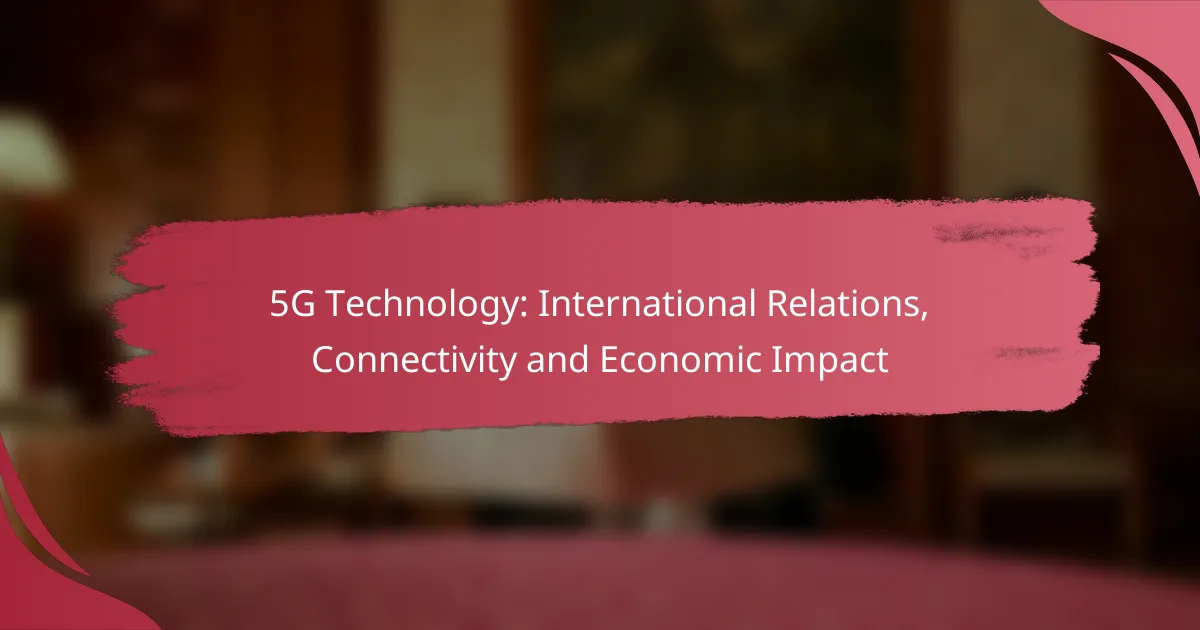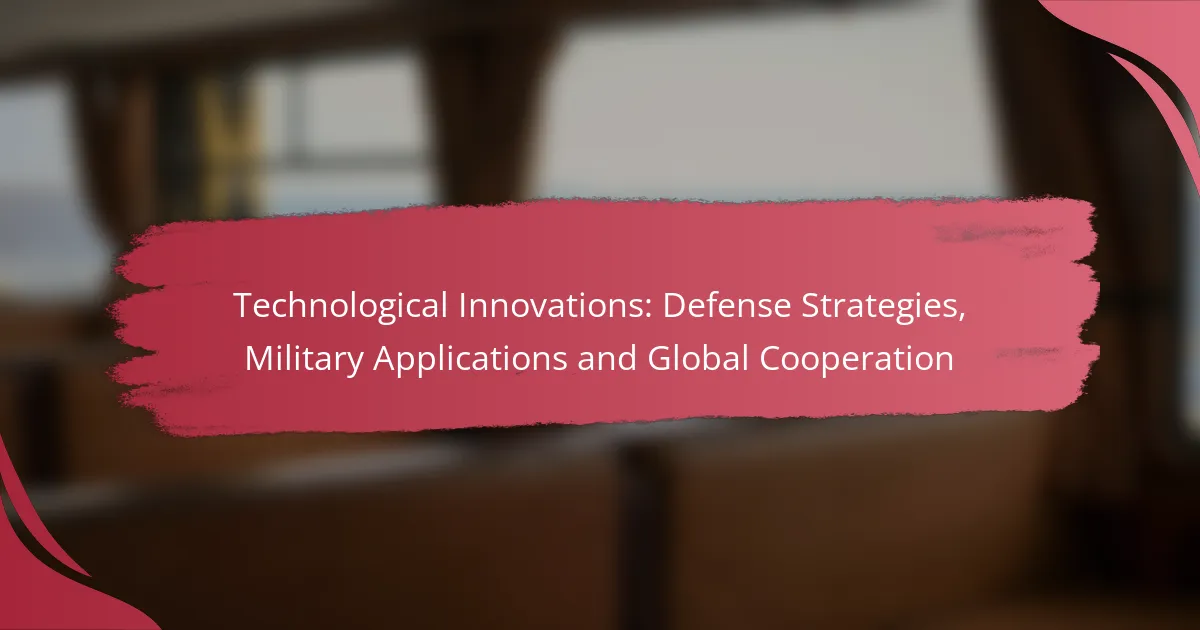5G technology is revolutionizing international relations by improving communication and reshaping geopolitical dynamics, while also fostering collaboration on technology standards. Its rapid implementation not only enhances connectivity through faster internet speeds and lower latency but also drives significant economic impacts, including GDP growth and job creation across diverse sectors. As countries navigate this technological landscape, the implications for global competition and cooperation become increasingly profound.

How Does 5G Technology Impact International Relations?
5G technology significantly influences international relations by enhancing communication, shifting geopolitical power, and fostering collaboration on technology standards. Its rapid deployment affects how countries interact, compete, and cooperate on a global scale.
Enhanced global communication
5G technology enables faster and more reliable communication across borders, facilitating real-time collaboration and information exchange. This enhanced connectivity allows nations to respond swiftly to global events, improving diplomatic relations and crisis management.
For instance, countries can leverage 5G networks for joint military exercises, disaster response coordination, and international trade negotiations. The ability to share data instantaneously can strengthen alliances and foster mutual understanding among nations.
Geopolitical power shifts
The rollout of 5G technology has the potential to shift geopolitical power dynamics, as countries that lead in 5G deployment may gain significant economic and strategic advantages. Nations like the United States and China are competing for dominance in 5G infrastructure, influencing global trade and security policies.
Countries that lag in 5G adoption may find themselves at a disadvantage, impacting their economic growth and international influence. This competition can lead to increased tensions and a reevaluation of alliances based on technological capabilities.
Collaboration in technology standards
5G technology necessitates international collaboration on technology standards to ensure compatibility and security. Countries must work together to establish guidelines that govern the deployment and operation of 5G networks, which can enhance trust and cooperation.
Organizations such as the International Telecommunication Union (ITU) play a crucial role in developing these standards. Nations that actively participate in these discussions can shape the future of global telecommunications and protect their interests in the evolving digital landscape.
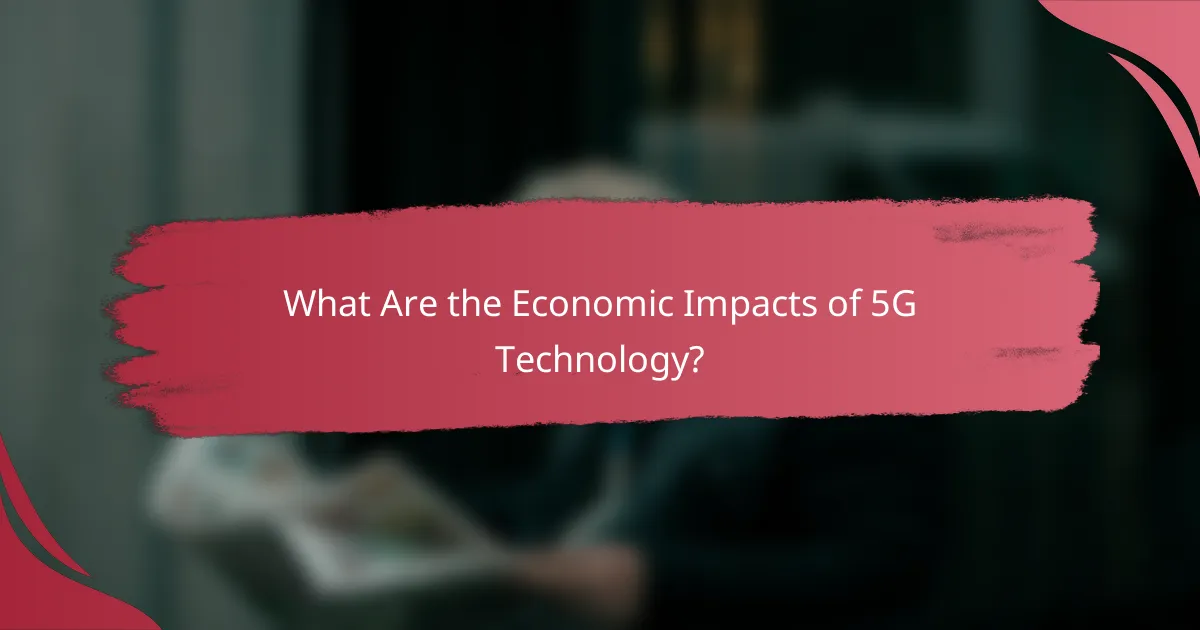
What Are the Economic Impacts of 5G Technology?
The economic impacts of 5G technology are significant, influencing GDP growth, job creation, and investment opportunities across various sectors. By enhancing connectivity and enabling new applications, 5G is poised to transform economies worldwide.
Boost in GDP growth
5G technology is expected to contribute substantially to GDP growth by enabling faster and more efficient communication. Countries adopting 5G can anticipate economic boosts in the range of several percentage points over the next decade, driven by increased productivity and innovation.
For example, sectors such as manufacturing, healthcare, and transportation are likely to see enhanced efficiency and reduced operational costs due to 5G. This technology facilitates real-time data exchange, which can lead to smarter decision-making and resource allocation.
Job creation in tech sectors
The rollout of 5G is projected to create numerous jobs, particularly in technology and telecommunications sectors. Estimates suggest that millions of new positions could emerge globally, focusing on network deployment, maintenance, and the development of new applications.
Additionally, as businesses adapt to 5G, there will be a growing demand for skilled workers in areas such as cybersecurity, software development, and data analysis. This shift emphasizes the need for training programs to prepare the workforce for these emerging roles.
Investment opportunities
5G technology opens up a range of investment opportunities across various industries, attracting both public and private funding. Investors are increasingly looking at companies that are poised to benefit from enhanced connectivity, such as those in IoT, autonomous vehicles, and smart cities.
Governments are also investing in 5G infrastructure to ensure competitive advantages in the global market. For instance, initiatives to expand broadband access in rural areas can stimulate local economies and create new business opportunities.
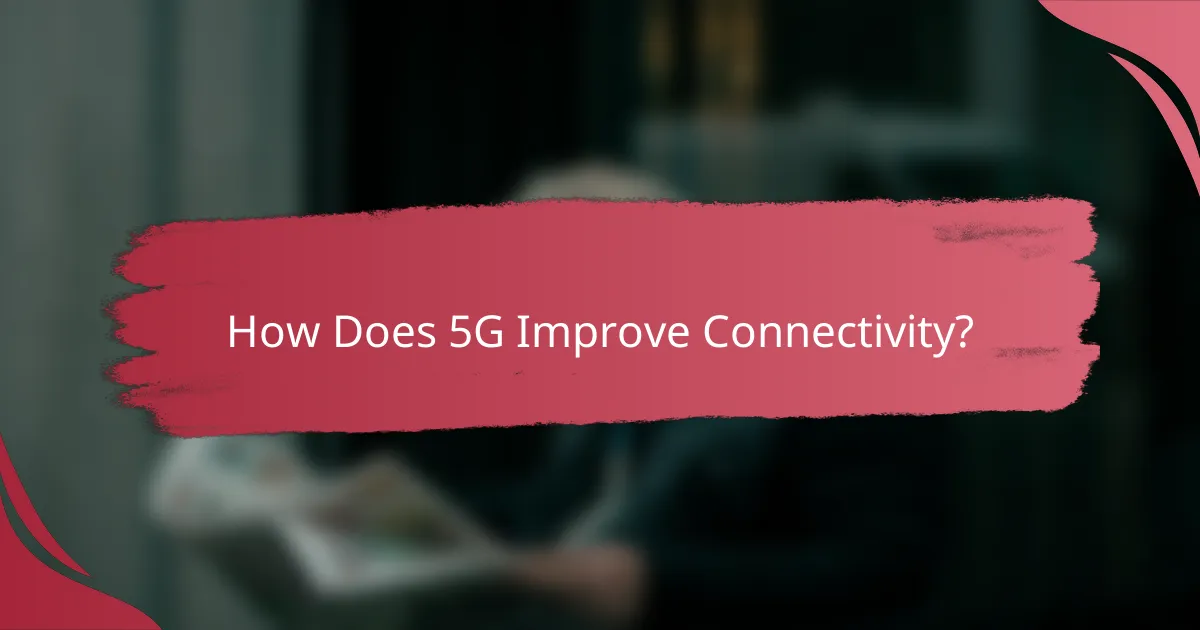
How Does 5G Improve Connectivity?
5G technology significantly enhances connectivity by providing faster internet speeds, lower latency, and the ability to connect more devices simultaneously. This advancement supports various applications, from everyday mobile use to complex industrial systems.
Faster internet speeds
5G offers internet speeds that can reach up to 10 Gbps, which is substantially faster than 4G. This increase allows for quicker downloads, smoother streaming, and improved online gaming experiences. For example, downloading a full-length movie could take just a few seconds compared to several minutes with previous technologies.
To fully benefit from these speeds, users should ensure they have compatible devices and access to 5G networks, which are expanding rapidly in urban areas. Checking local coverage maps can help determine availability.
Lower latency
5G reduces latency to as low as 1 millisecond, which is crucial for applications requiring real-time responsiveness, such as remote surgery or autonomous vehicles. This near-instantaneous communication enhances user experiences in gaming and virtual reality, where delays can disrupt engagement.
When considering 5G for business applications, organizations should evaluate their specific needs for low latency to determine if the investment aligns with their operational goals. Testing latency in various environments can provide practical insights.
Increased device connectivity
5G technology supports a significantly higher number of connected devices per square kilometer—potentially up to 1 million devices. This capability is vital for the Internet of Things (IoT), where numerous smart devices communicate simultaneously, such as in smart cities or industrial automation.
Businesses and consumers should consider the implications of increased connectivity, such as the need for robust security measures to protect against potential cyber threats. Implementing strong encryption and regular software updates can help safeguard connected devices.

What Are the Key Challenges of 5G Implementation?
The key challenges of 5G implementation include high infrastructure costs, regulatory hurdles, and security concerns. Addressing these issues is crucial for successful deployment and widespread adoption of 5G technology.
Infrastructure costs
Implementing 5G networks requires significant investment in new infrastructure, including base stations, antennas, and fiber optic cables. Costs can range from billions to tens of billions of dollars, depending on the scale and geography of the deployment.
Telecommunications companies must weigh the costs against potential revenue from 5G services. In urban areas, where demand is high, investments may yield quicker returns, while rural deployments may take longer to become profitable.
Regulatory hurdles
5G deployment often faces regulatory challenges, including obtaining permits for new infrastructure and complying with local zoning laws. These regulations can delay the rollout and increase costs for service providers.
Governments may also impose restrictions on foreign technology vendors, impacting supply chains and competition. Understanding local regulations and engaging with authorities early can help mitigate these hurdles.
Security concerns
As 5G networks enable more connected devices, they also increase the potential attack surface for cyber threats. Security vulnerabilities can arise from both hardware and software components, necessitating robust security measures.
Service providers should implement end-to-end encryption and regular security audits to protect user data. Collaborating with cybersecurity experts and adhering to established security standards is essential for maintaining trust in 5G technology.

How Do Different Countries Approach 5G Deployment?
Countries vary significantly in their strategies for 5G deployment, influenced by economic goals, regulatory environments, and technological capabilities. While some nations prioritize rapid rollout and infrastructure investment, others focus on regulatory frameworks and security concerns.
United States strategies
The United States adopts a competitive approach to 5G deployment, encouraging private sector investment and innovation. Major telecom companies like Verizon and AT&T are leading the charge, with plans to cover a majority of urban areas by the mid-2020s.
Key strategies include spectrum auctions, which allocate frequencies for 5G use, and partnerships with local governments to streamline infrastructure development. However, concerns about cybersecurity and the dominance of foreign technology providers, particularly from China, have led to increased scrutiny and regulatory measures.
China’s 5G expansion
China is aggressively expanding its 5G network, aiming to become a global leader in telecommunications technology. The government has invested heavily in infrastructure, with state-owned enterprises like China Mobile and Huawei playing pivotal roles in deployment.
By 2023, China had already established hundreds of thousands of 5G base stations, covering major cities and industrial zones. The focus is not only on consumer applications but also on integrating 5G into smart manufacturing and urban management, showcasing the technology’s potential to drive economic growth.
European Union regulations
The European Union takes a more regulatory approach to 5G deployment, emphasizing security and interoperability among member states. The EU has established guidelines to ensure that 5G networks are resilient and secure, addressing concerns about potential risks from foreign suppliers.
Member countries are encouraged to collaborate on infrastructure projects and share best practices, with the goal of achieving widespread 5G coverage by 2030. However, the pace of deployment varies across countries, influenced by local regulations and market conditions.
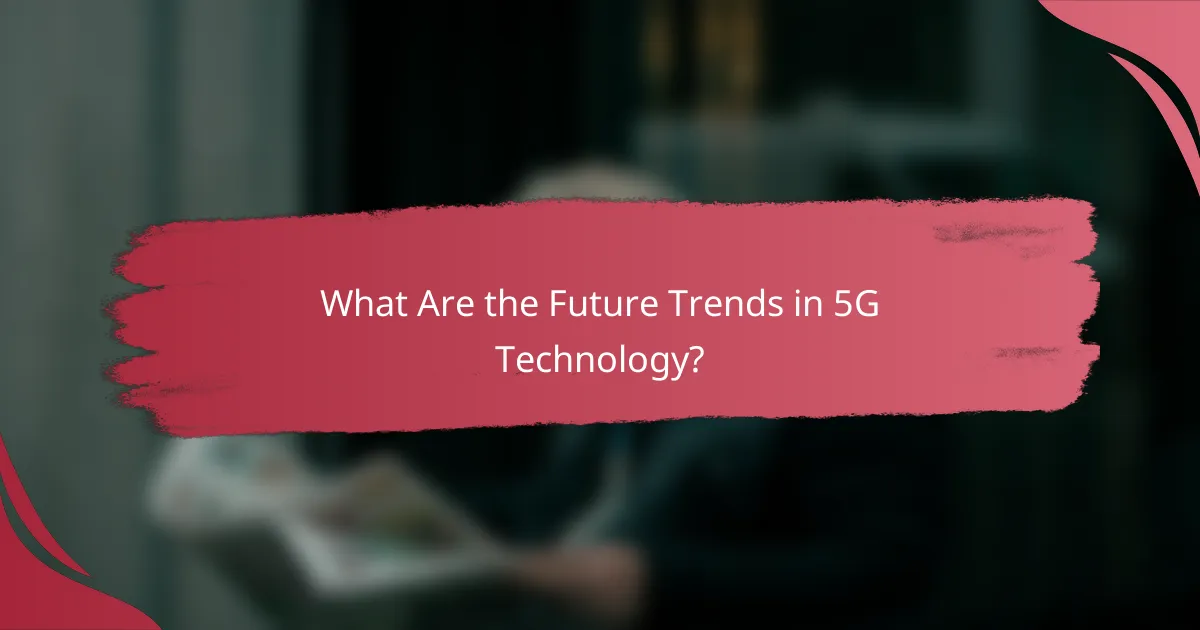
What Are the Future Trends in 5G Technology?
The future of 5G technology is characterized by enhanced connectivity, integration with emerging technologies, and the groundwork for next-generation networks like 6G. Key trends include the expansion of Internet of Things (IoT) applications, advancements in artificial intelligence, and ongoing research into 6G capabilities.
Integration with IoT
5G technology is set to revolutionize the Internet of Things (IoT) by enabling faster data transmission and supporting a larger number of connected devices. This integration allows for real-time communication between devices, enhancing applications in smart cities, healthcare, and industrial automation.
For instance, smart home devices can operate more efficiently with 5G, allowing for seamless control and monitoring. In urban settings, 5G can facilitate smart traffic management systems that reduce congestion and improve safety.
Advancements in AI applications
The synergy between 5G and artificial intelligence (AI) is expected to drive significant advancements in various sectors. With low latency and high bandwidth, 5G can support complex AI algorithms that require real-time data processing, such as autonomous vehicles and predictive maintenance in manufacturing.
Businesses can leverage AI-enhanced analytics powered by 5G to make data-driven decisions faster. For example, retail companies can analyze customer behavior in real-time to optimize inventory and improve customer experiences.
Potential for 6G development
As 5G technology matures, research into 6G is already underway, aiming to further enhance connectivity and performance. 6G is expected to offer even lower latency, higher speeds, and the ability to connect trillions of devices, paving the way for innovations like holographic communication and advanced virtual reality experiences.
While 6G is still in the conceptual phase, its development will likely focus on integrating AI and machine learning to create more adaptive networks. This evolution will require collaboration among governments, industries, and researchers to establish standards and regulations that ensure a smooth transition from 5G to 6G.
